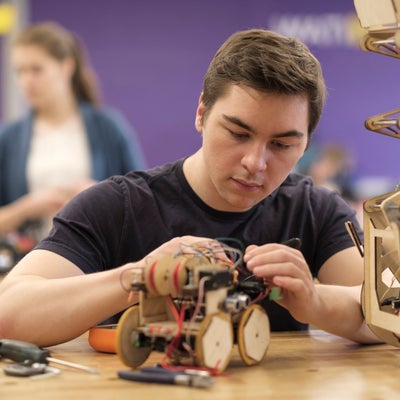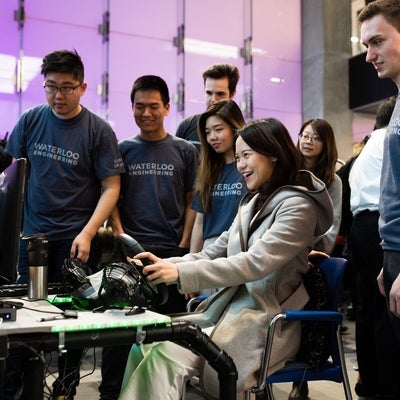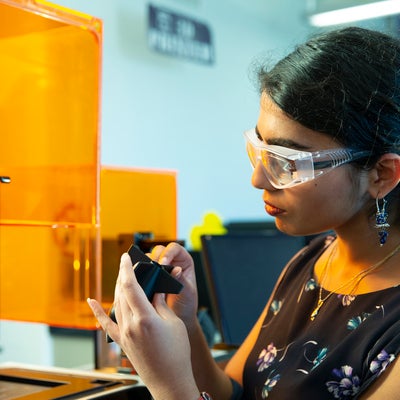Why Mechatronics Engineering?
Create the future’s smart machines. Build the technologies of tomorrow using the latest in sensing, computing, and communication devices. Autonomous vehicles, drones, 3D printers, smartphones, satellite systems, and yes, robotics, are all the computer-controlled electromechanical systems that you will learn to design.
In the first program of its kind in Canada, you’ll develop expertise in mechanical engineering, control engineering, electronics, and computer science, pulling together know-how from these different fields to develop sophisticated machines.
Courses in Mechatronics Engineering
Courses in first year concentrate on basic mathematics, physics, computation and engineering materials. Second and third-year courses go more deeply into Mechatronics Engineering and include topics such as electromechanical devices, kinematics and dynamics of machines, computer interfacing, real-time operating systems, electromechanical machine design, and control systems.
Sample first-year courses
This is a sample schedule. Courses are subject to change.
| 1A Term | 1B Term |
|---|---|
Upper year courses
For more information about courses past your first year, check out the Undergraduate Academic Calendar.
Customize your degree with options
Options
Options are a way to provide you with a path to expand your degree and get a secondary emphasis in another subject or area. Students should decide if they are interested in taking options as they enter second year. Some available options are:
Co-op for Mechatronics Engineering students
You’ll have an unrivalled opportunity to gain paid work experience before you even graduate. We’ll help you navigate job applications, résumés, and interviews; you’ll have the added benefit of trying out different roles and/or industries to find the one that fits you while building your work experience and reinforcing your in-class learning out in the real world. It all adds up to a competitive advantage after graduation.
Starting in first year, you'll normally alternate between school and work every four months, integrating your classroom learning with real-world experience. You can return to the same employer for a couple of work terms to gain greater knowledge and responsibility or work for different employers to get a broad range of experience.
Your first work term will be halfway through first year
| Year | September to December (Fall) | January to April (Winter) | May to August (Spring) |
|---|---|---|---|
| First | Study | Co-op | Study |
| Second | Co-op | Study | Co-op |
| Third | Study | Co-op | Study |
| Fourth | Co-op | Study | Co-op |
| Fifth | Study | Study | - |
or after first year.
| Year | September to December (Fall) | January to April (Winter) | May to August (Spring) |
|---|---|---|---|
| First | Study | Study | Co-op |
| Second | Study | Co-op | Study |
| Third | Co-op | Study | Co-op |
| Fourth | Study | Co-op | Study |
| Fifth | Co-op | Study | - |
There are two options for co-op sequences. You can request your preference if you receive an offer of admission. Learn more about co-op.
Example co-op positions for Mechatronics Engineering students
- Systems software engineering
- Robotics software developer
- Hardware engineering intern
- Mechanical designer-automation
- Control systems software design
- Instrumental engineering
- Product manager
- Application developer
From space to research, engineering covers all grounds
Emily Steiner, Mechatronics Engineering student
For Emily's second and third work term, she worked at exactEarth as a software engineering co-op. The company specializes in maritime tracking using low-orbiting satellites. Emily had the opportunity to contribute to their newest satellite launch as a part of the software team. She had an integral role in designing the autonomous day-to-day operations software for the satellite and integrating flight operation procedures.
For Emily's fourth work term she worked at Canadensys Aerospace Corporation as their aerospace engineering co-op. The company’s current most significant project is collaborating with the Canadian Space Agency to make the Canadian Lunar Rover. Along with her team, Emily was able to customize the hardware and electrical system for this project to make it robust for space deployment.

Example careers for Mechatronics Engineering graduates
- Systems engineer
- Telematics engineer
- Product design engineer
- Firmware engineer
- Program manager
- Mechanical engineer
- Android partner engineer
- Artificial intelligence researcher
Capstone design projects in Mechatronics Engineering
Capstone Design is the culmination of the engineering undergraduate student experience, creating a blueprint for innovation in engineering design.
Supported by numerous awards, Capstone Design provides Waterloo Engineering students with the unique opportunity to conceptualize and design a project related to their chosen discipline.
A requirement for completion of their degrees, Capstone Design challenges students teams to push their own boundaries, and apply the knowledge and skills learned in the classroom and on co-op work terms. It reinforces the concepts of teamwork, project management, research and development.
For a full list of previous capstone design projects, see our Capstone Design website.
ExoGrasp (Capstone 2025)
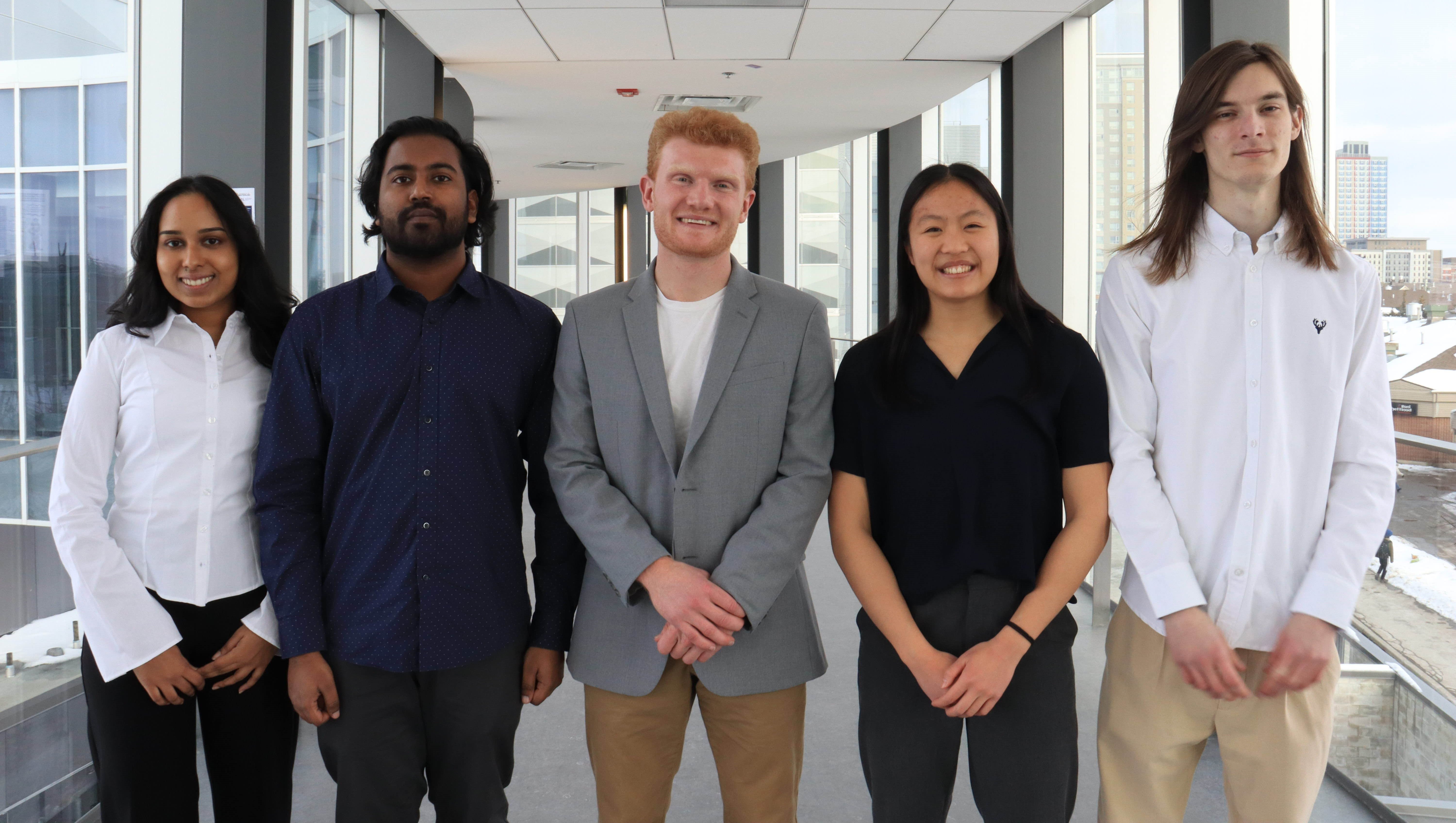
Nathan Bellsmith, Megan Chang, Devshi Perera, Relja Vojvodic, Seyon Yogendran
ExoGrasp is a soft robotic glove designed to aid stroke patients with hand impairment by enhancing grip strength and dexterity. It utilizes pneumatically actuated artificial muscles to assist users in grasping and holding objects. Surface electromyography (sEMG) sensors detect user intent, enabling intuitive control through machine learning (ML) algorithms. By responding to natural muscle signals, ExoGrasp restores functional hand movements, improving independence and quality of life for users with limited hand mobility. The glove offers a non-invasive, adaptive solution for rehabilitation and daily use.
GROB (Garbage Removal Optimization Bot) (Capstone 2025)
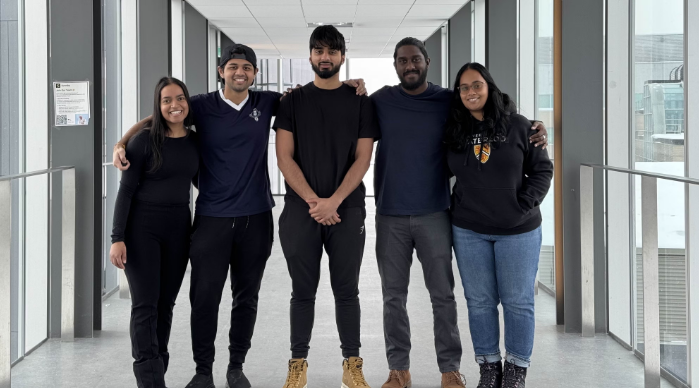
Kaveet Grewal, Abhishek Persad, Umar Rasool, Celine Roodal, Thivjaa Thamotharanathan
The Garbage Removal Optimization Bot is an autonomous robot designed to navigate urban areas, collect and compact trash, and deliver the compacted waste to a designated drop-off location. Built on a Clearpath Husky platform, it features a compactor on top and a front-mounted scooper. Equipped with a vision system to identify trash, the robot autonomously gathers waste and transports it efficiently. This project reduces the need for manual labor in litter collection, promoting cleaner, more sustainable, and efficient cities.
Student design teams
The Sedra Student Design Centre consists of over 20,000 square feet of space dedicated to design teams and student projects. There are more than two dozen design teams, all of which are student-led, and many of which represent Waterloo internationally.
Some examples include:
UW REACT

UW REACT keeps the spirit of the FIRST Robotics Competition alive after high school by building fully autonomous FRC robots. We design, manufacture, program, and compete against other FRC teams, but without using a human driver. We also host the worlds largest Robot in 3 Days event every year, where two teams of students build FRC robots in just 72 hours, completing the entire FRC challenge 40 days before bag and tag.
UW Orbital

UW Orbital is a group of determined individuals, of all different skill levels and programs, coming together to build a CubeSat with the goal of competing in the upcoming Canadian Satellite Design Challenge (CSDC). Throughout the design challenge, students will have the chance to learn about electrical, mechanical and firmware engineering, as well as get exposure to the managerial and business side of the space industry.
UW Robotics Team

The uWaterloo Robotics Team focuses on the constantly evolving field of autonomous vehicles and the team frequently takes on multiple projects and competitions each year. These competitions have included the NASA Sample Return Robot Challenge, the International Autonomous Robot Racing Challenge, the Intelligent Ground Vehicle Competition, and the University Rover Challenge.
Mechatronics Engineering alumni
Mihaela Vlasea (BASc '08)

Mihaela has been recognized by a leading industry association as one of the 20 most influential academics in smart manufacturing. She specializes in metal additive manufacturing (AM), a.k.a 3D printing.
Alex Rodrigues and Brandon Moak
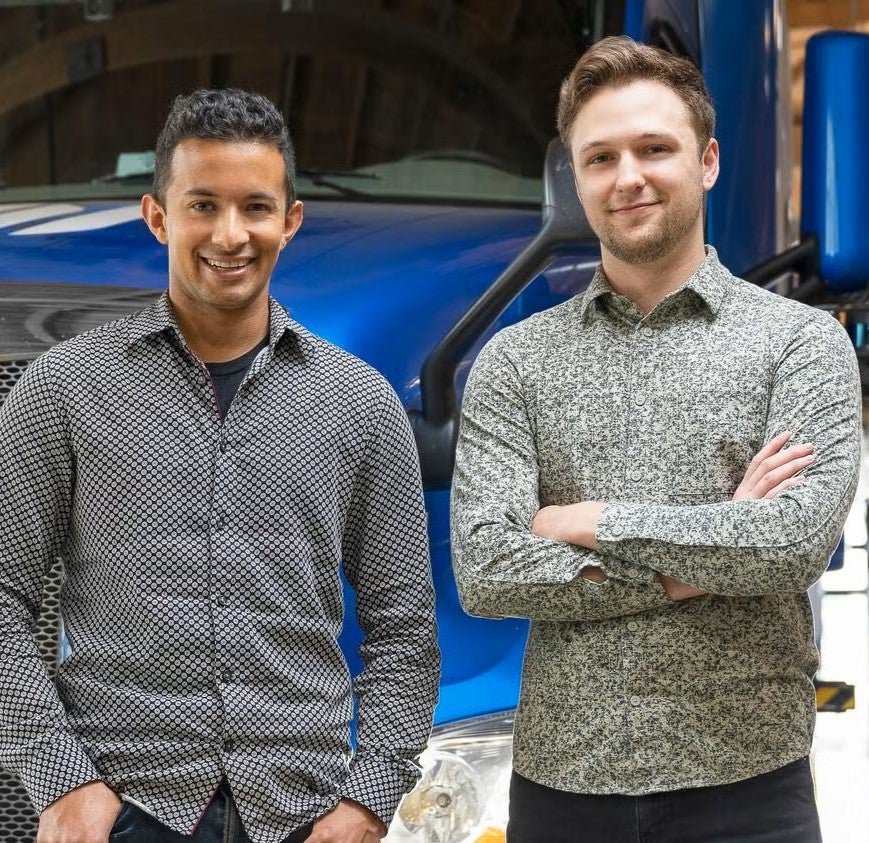
Alex and Brandon, launched Embark Trucks, which recently announced a proposed merger deal to go public, with a market capitalization of US $5.16 billion.
Shahed Saleh (BASc '24)

Shahed completed several undergraduate research positions which enabled her to publish five research papers and win several awards for her engineering designs.
Christina Sullivan (BASc '23)

Christina never planned to work in Formula One racing — but after watching Drive to Survive during the pandemic, she went from studying Mechatronics Engineering at Waterloo to turning a co-op placement at Williams Racing into a full-time role.

